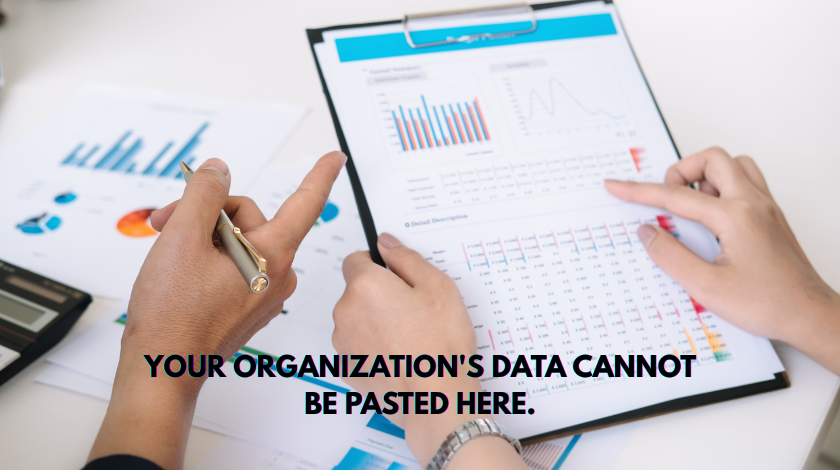If you’ve ever worked in Microsoft Teams, Outlook, or even other Office apps, you might have run into a frustrating message: “Your organization’s data cannot be pasted here.” The first time I saw it, I thought my computer was glitching. I had copied some text from Teams to Outlook, and suddenly, nothing happened. Instead of a normal paste, I got that warning.
This error can be confusing, especially if you’re not very technical. It feels like your computer is blocking you for no reason. But in reality, it’s tied to how your company handles data security. Let’s break it down in simple words, step by step, so that even if you’re a beginner, you’ll understand why this happens, and more importantly, what you can do about it.
What does “Your Organization’s Data Cannot Be Pasted Here” mean?
This message usually pops up when you try to copy something from one app and paste it into another. For example:
-
Copying from Microsoft Teams into a personal email.
-
Copying sensitive text from Outlook into Notepad.
-
Copying Excel data into a third-party app.
The error means your IT department has applied data protection policies that restrict where organizational data can go. These policies are meant to prevent data leaks, whether intentional or accidental.
Think of it like a bouncer at a club. You can leave the club, but only through the approved doors. If you try sneaking through the window, you’ll get stopped. In this case, your clipboard is that window.
Why does this error appear?
There are a few main reasons:
-
Clipboard restrictions
Your IT team can control whether you can copy/paste between certain apps. For example, they may allow copy/paste between Word and Excel but block it from Teams to a personal browser. -
App Protection Policies (APP)
If your organization uses Microsoft Intune, there are mobile application management policies that control how data moves between apps. -
Security Risks
Copying sensitive company information into an unsecured app (like WhatsApp, Notes, or Gmail) could cause leaks. -
Configuration issues
Sometimes, the error shows up even when it shouldn’t, often due to outdated apps, buggy updates, or misconfigured policies.
Read Also: A Complete Guide to RTI Scheduler: How It Works, Benefits, and Real-World Uses
How it affects employees and productivity
This restriction can feel annoying, especially when you’re just trying to get work done. I remember needing to copy meeting notes from Teams to a Word document, only to be blocked. It felt like the system didn’t trust me, even though I had no intention of leaking data.
The impact includes:
-
Wasted time trying to retype text manually.
-
Frustration during tight deadlines.
-
Workarounds like taking screenshots, which can be even less secure.
This is a classic case of security vs convenience. While IT sees it as protecting data, employees see it as slowing down work.
Common scenarios where this happens
-
Microsoft Teams to Outlook – You copy chat messages into an email.
-
Teams to Word or Excel – Meeting notes won’t paste properly.
-
Office Apps to Personal Apps – Copying into Notepad, Google Docs, or WhatsApp Web.
-
Virtual Desktop Environments – Copying between your company VM and local PC.
Step-by-step fixes and troubleshooting
Here’s what you can try if you see the error:
1. Quick checks
-
Make sure both apps (like Teams and Word) are updated.
-
Try restarting the apps.
-
Test if the issue happens with all content or just certain text.
2. Check with IT policy
-
Ask your IT team if they’ve applied clipboard restrictions.
-
Sometimes, policies are too strict and can be adjusted.
3. Alternative solutions
-
If you must transfer text, try using OneDrive or SharePoint instead of copy/paste.
-
Screenshots can work, but they’re not ideal.
-
Some organizations allow exporting files instead of copying text.
Security perspective: why IT sets these restrictions
From a company’s view, this isn’t just about making your life harder. Data breaches can cost millions. Imagine if an employee accidentally copied confidential financial data into a personal app, and it leaked.
Policies like these are preventive. They limit the ways sensitive data can “escape” the secure environment. It’s a tradeoff: better security, slightly reduced convenience.
Personal experience or relatable story
In one of my past jobs, I needed to copy a financial figure from Excel to Slack. Instead of pasting, I got the same warning. At first, I was irritated, but later I realized it made sense. That number, if leaked, could have been used by competitors or even media. The IT team explained that we could only share via official channels.
That conversation changed how I saw these restrictions. Instead of thinking of them as roadblocks, I saw them as guardrails.
Best practices for handling sensitive data
-
Use approved apps only: Stick to Teams, Outlook, OneDrive, and other company-approved tools.
-
Report issues: If policies feel too restrictive, let IT know. They may adjust them.
-
Avoid workarounds: Screenshots and personal emails might feel faster, but they risk violating compliance rules.
-
Stay updated: Outdated apps often cause unnecessary errors.
When to contact IT support
-
If you believe the restriction is too strict for your role.
-
If copy/paste is blocked between two work apps that should be allowed.
-
If the error suddenly appears after an update.
Your IT team may adjust settings or explain why the policy exists.
Final thoughts and recommendations
While “Your organization’s data cannot be pasted here” is frustrating, it exists for a reason. Security today is more critical than ever. As employees, we should see these restrictions as a layer of protection, not punishment. At the same time, IT departments should balance security with usability to avoid slowing down productivity.
Conclusion
The error is simply a result of organizational data policies protecting sensitive information. It might feel inconvenient, but it is part of a bigger picture: keeping company data safe. By understanding why it happens, knowing possible fixes, and respecting IT rules, you can turn this annoyance into just another part of secure work life.
FAQs
Q1: Can I disable the “Your organization’s data cannot be pasted here” error myself?
No, only your IT administrator can change these restrictions.
Q2: Why does copy/paste work sometimes but not always?
It depends on the apps involved and how the IT policy is configured.
Q3: Is this error a bug?
Not always. Sometimes it’s intentional policy, but occasionally it can be due to outdated apps or misconfigurations.
Q4: Can I bypass the restriction?
You shouldn’t. Workarounds may violate company policy and create security risks. Always contact IT if it’s affecting your work.
Q5: Which apps usually trigger this error?
Microsoft Teams, Outlook, Word, Excel, and other Office apps are the most common.




